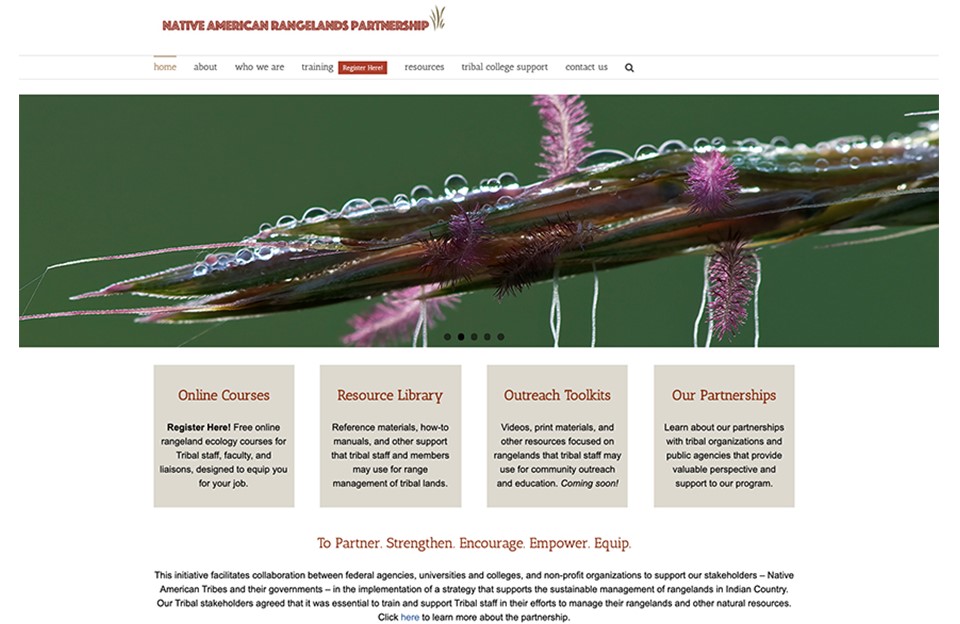There are approximately 55 million acres of Tribal rangelands within the United States boundaries that meet essential ecological, sociological, cultural, and physical needs for the indigenous people that live there. Input received from Tribal members of the Society for Range Management’s Native American Rangeland Advisory Committee (NARAC), along with numerous Tribal representatives who participated in focus groups, indicates that culturally relevant training and capacity building should be a priority for any comprehensive rangeland conservation strategy. In addition, tribal range managers are often in need of educational tools for their communities and tribal council members. At the tribal college level, many colleges are limited in faculty numbers and curriculum, and tribal students may not have access to specialized courses that are required for federal, state, or tribal employment. Management of the tribe’s own natural resources is becoming more relevant, providing a sense of purpose, empowerment and stewardship for the youth.
As a result of this need, funding was acquired from the USDA Natural Resources Conservation Service and the US Forest Service to conduct a 4-year pilot project that would jump-start the Native American Rangelands Partnership, with which the USDA Climate Hubs has joined as a partner along with the Intertribal Agriculture Council, the Native American Fish and Wildlife Society, the Intertribal Timber Council, and the Bureau of Indian Affairs. Helena Deswood (Southwest Hub Tribal Coordinator) and Dannele Peck (Northern Plains Director) represent the Climate Hubs on the Native American Rangelands Partnership Advisory Group Committee.
The Native American Rangeland Training Initiative (NARTI) project

The Native American Rangeland Training Initiative project is being hosted by the Society for Range Management and includes four components:
- Rangeland training online and field courses tailored for tribal/regional needs;
- Rangeland management toolkits for outreach in both Native American and Hispano land-based communities;
- An Inter-tribal informational website on rangeland management; and
- An assessment for an accredited online soil and rangeland ecology course for tribal students.
More information can be found at www.nativeamericanrangelands.org.


